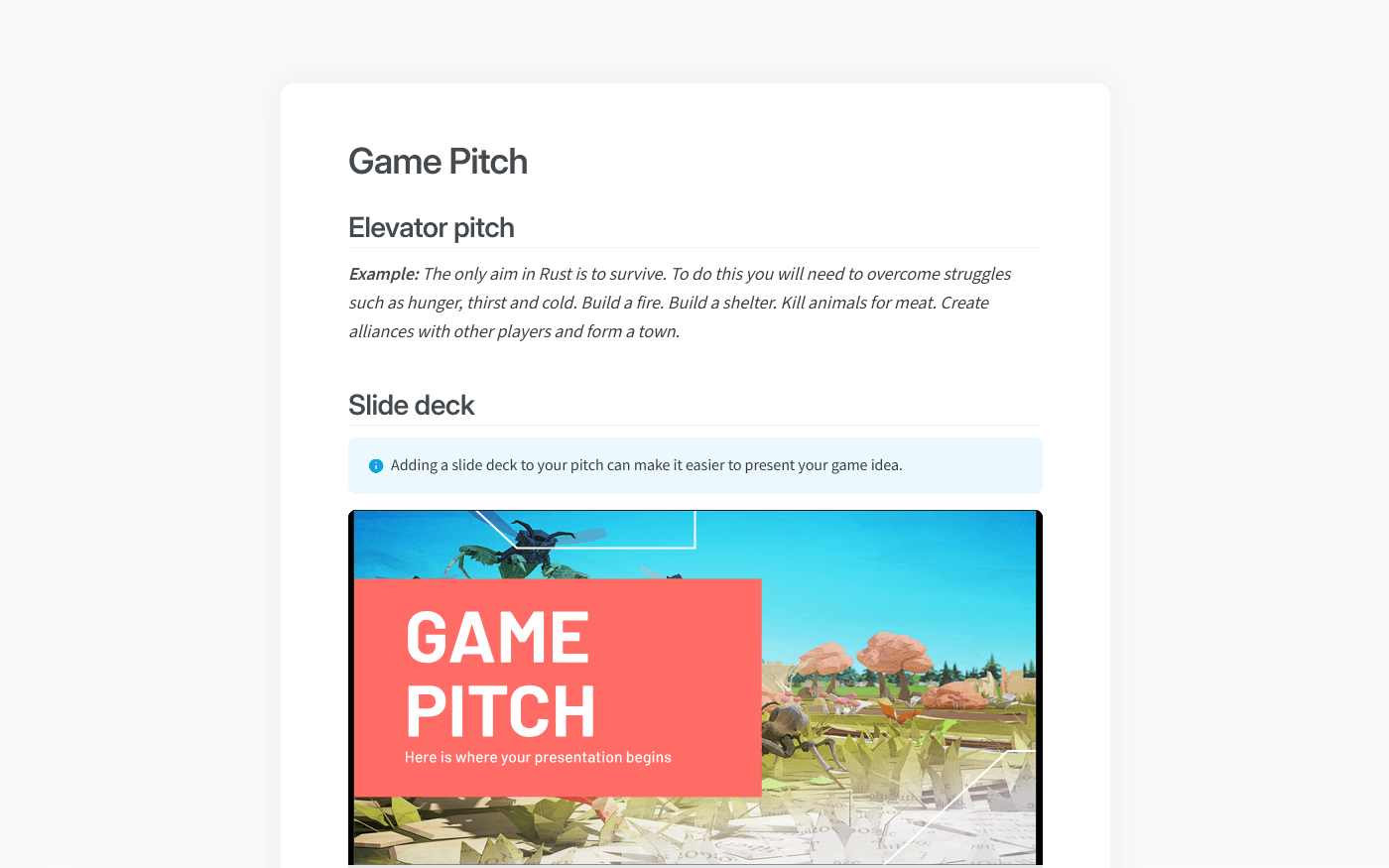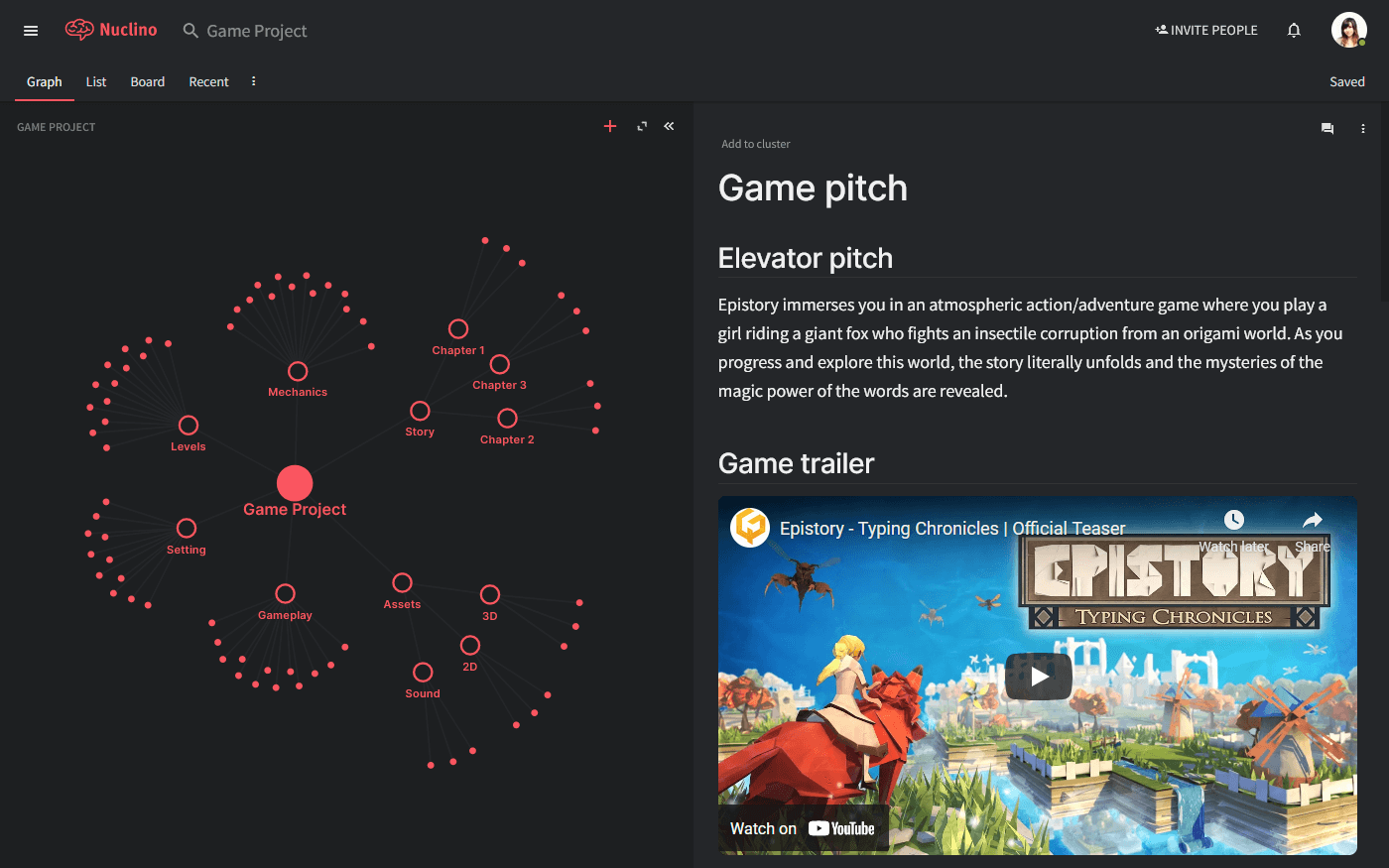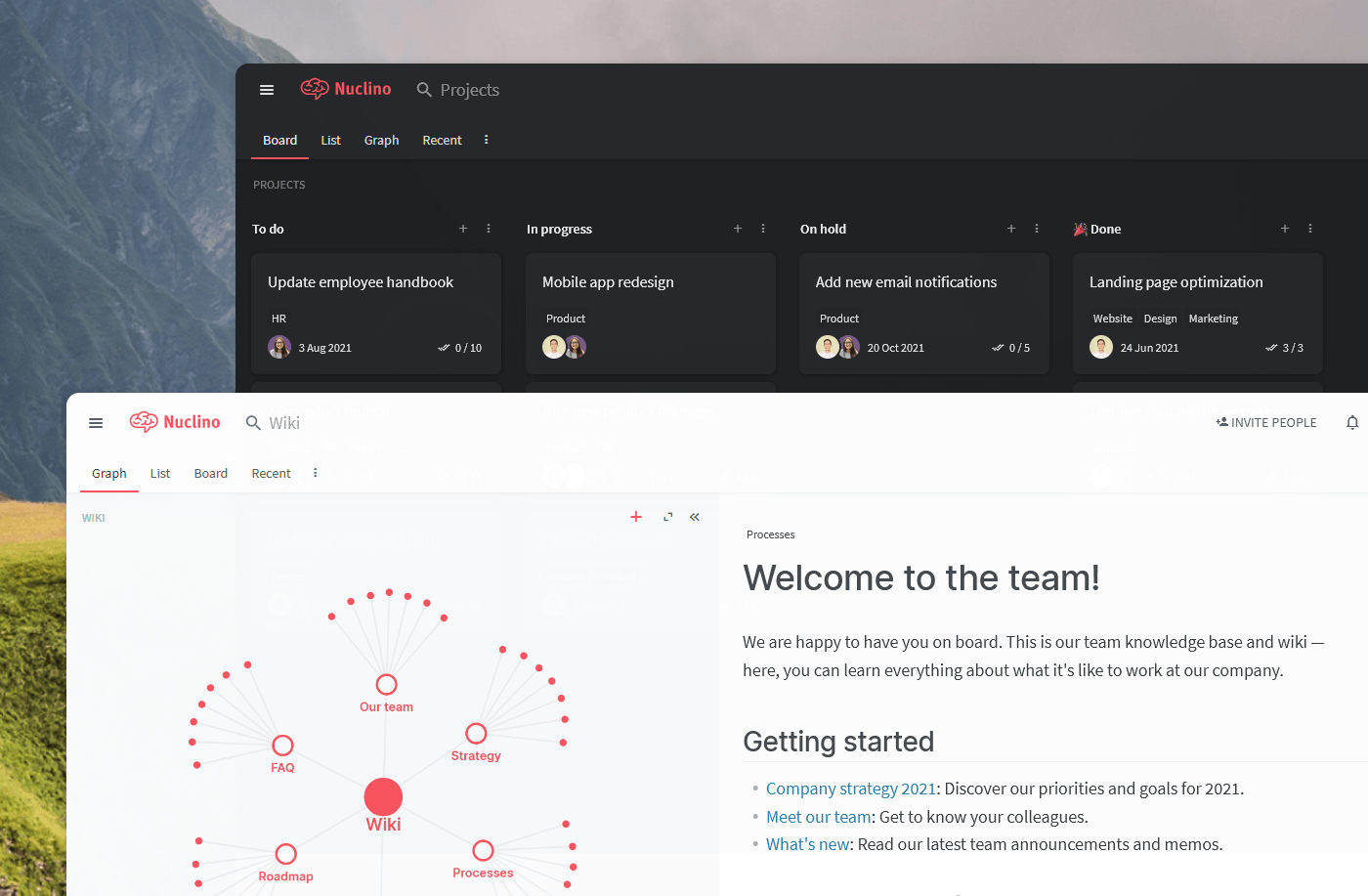How to Pitch Your Video Game to Publishers
Learn how to sell your vision of the game to potential investors.
If you're reading this, you probably have a game that you're working on that you really care about. To successfully see this passion project to completion, you will most likely need a dedicated development team and some amount of funding. This is where your pitching skills should come in.
A game pitch is your opportunity to sell the vision of your game to potential investors, team members, studios, and game journalists. Unfortunately, as Jason Della Rocca, the former executive director of the International Game Developers Association, puts it — "most developers suck at pitching".

Preparing a pitch may not be the most exciting part of the game development process, but the more work you put in upfront, the more likely it is that you'll reach your goals later. In this article, we will take a deep dive into how you can craft an impactful pitch for your game.
- What is a game pitch?
- What to include in a game pitch
- Tips for pitching a game
- Game pitch example and template
What is a game pitch?
A great game idea should speak for itself — but in reality, this is rarely the case. The games market is becoming increasingly over-saturated, and most AAA games, let alone indie games, are having a difficult time getting noticed. This makes pitching a vital skill in game development.
A game pitch is a concise description of your game, meant to sell the experience to a specific audience. It's one of the key elements of your game design document. Here's an example of a game pitch created in Nuclino:

Nuclino is a unified workspace where game development teams can bring all their design docs, tasks, and game assets together. You can also manage your entire pitching process and track your progress with different publishers. Create an account and start collaborating on your own game pitch:

Creating a game pitch may sound simple, but even the most experienced game designers and developers often don't get it right. "Interestingly, most of the hits I've had — the really big hits, SimCity, The Sims — were the ideas that I got an amazing amount of pushback from with almost everybody I described it to initially," said Della Rocca.
In many cases, an impactful game pitch is not an explicit description of the game design — it's a statement that conveys the feeling you want to create for people playing your game. What got you excited about your game idea? Your pitch should aim to recreate this thought process in the minds of your audience.
If you're feeling stuck, Nuclino comes with an AI-powered assistant called Sidekick that can help you with the pitch writing process.
Sidekick also allows you to instantly generate unique concept art, storyboards, and other images for your pitch in a variety of styles – 2D and 3D, abstract and photorealistic, detailed and simple.

What to include in a game pitch
A game pitch should speak to your prospective investors and publishers. Excite them with your game and vision, but always address their practical business concerns.
Here's what you might want to include in your pitch.
Elevator pitch
It may be a cliche, but your elevator pitch is often what makes or breaks your entire presentation. While it can be tempting to gush about your game, it's essential to start off with a crystalized message. Don't go deep into explaining the mechanics, just get people interested in hearing more about your game.

Elevator pitch example for a game (Source: Button City pitch deck)
Visuals and/or a prototype
Visuals are a great way to make your game pitch more memorable. You can include concept art, put together gameplay videos and GIFs, make posters, and more. If you don't have a professional artist on your team yet, you can use beginner-friendly design apps, logo makers, and character creator tools, such as Adobe Express or Canva to create the visuals you need. AI image editors and AI video generators can also help speed up the process. Just be mindful not to over-rely on AI tools — your visuals should set realistic expectations for the game you’re making.
If you are creating a slide deck, make sure that the visual design of your presentation matches the theme and mood of your game and immerses your audience in its atmosphere.
Note that many publishers may be less willing to sign a game based on a GDD or concept alone, so a playable prototype can greatly increase your chances of success.
Project description
Use this section to answer the big questions your potential investors and publishers may have for you, including:
Who are you and your team? Are you planning to expand your studio?
Do you have experience successfully shipping games before?
Who is the intended audience of your game?
What is the genre of the game?
What platforms do you want to publish on?
What game engine (or other game development software) are you using to build the game?
What is your game development timeline?
What games served as your inspiration? What makes your game unique?
What are the core mechanics?
What is your monetization strategy?
What is your marketing plan?
What is your budget breakdown? How much have you already invested and how much do you hope to receive for funding? What is your expected burn rate?
Will this project be your sole focus? Is your team working on any other games on the side?

Example of key game development milestones (Source: Bear & Breakfast pitch deck)
This is the largest section of your game pitch — but don't get carried away and write a novel. Use short, easy-to-scan bullet points why you think your game development project is promising.
Tips for pitching a game
With a strong pitch, you can maximize your impact and possibly receive feedback that will help you refine and continue pitching elsewhere.
Here are some best practices that can help you:
Tailor your pitch
There is no such thing as a one-size-fits-all pitch. You have to know your audience and refine and modify your language based on that.
Pitch to the right people
No matter how convincing you are, there is no point in pitching your game to the wrong audience. Do your research and make sure that the publisher you are pitching to creates content similar to your game.
Be empathetic
Like game design itself, pitching is largely about psychology. Pitch from the perspective of the player and try to get your audience to experience the feeling you want your game to create.
Build a community
Whether it's on Discord, Facebook, Twitter, or through newsletters, work to build a community around your game idea early on. If you build enough interest, you will be in a much better position to negotiate with funding sources down the road.

Example of marketing strategy and community building (Source: Backbone pitch deck)
Be persistent yet patient
It's fair to ask your contact if they have a timeline for when you should expect to hear back, but give them enough time to digest your pitch. Your first follow-up email should be as simple as “Do you need any more info or materials from me to evaluate the game?”.
Develop pitching endurance
Many of your pitches will be rejected, and that's just how things are. Funding sources receive more pitches than they can afford to produce. A “yes” is what you want, however, a quick “no” with good feedback can also be invaluable.
Game pitch example and template
No two game pitches will be the same. Both the content and the format of your pitch need to be customized to fit the type of publisher you are pitching to. Some prefer casual slide decks, others may expect a lengthy document.
However, writing your pitch from scratch can certainly be a daunting task, so this template may be a good starting point. Here's an example that you can customize to fit your needs:

Ultimately, your pitch needs to tell a story — a story about your vision for your game, your capability to deliver on its promise, and a story of why this game is not a risky investment.
And even if the publisher doesn't sign the game, the most important part of this process is developing long-term relationships, building trust, and creating opportunities for future dialogue. Who knows? The parties you pitch may refer you over to another investor, whose portfolio would be a better fit for your project.
Nuclino: Your team's collective brain

Nuclino brings all your team's knowledge, docs, and projects together in one place. It's a modern, simple, and blazingly fast way to collaborate, without the chaos of files and folders, context switching, or silos.
Create a central knowledge base and give your team a single source of truth.
Collaborate in real time or asynchronously and spend less time in meetings.
Manage and document your projects in one place without losing context.
Organize, sort, and filter all kinds of data with ease.
Integrate the tools you love, like Slack, Google Drive, Figma, Lucidchart, and more.
Ready to get started?
